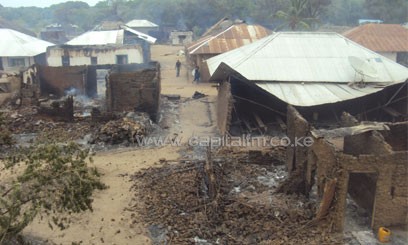
She however revealed that among those mentioned were local businessmen and traders- classified as middle level perpetrators- alongside villagers on the lower end of the scale/FILE
And although the Kenya National Commission on Human Rights (KNCHR) declined to give journalists the exact number of those mentioned in its report, Commissioner Anne Munyiva said they would be questioned for whatever role they played.
She however revealed that among those mentioned were local businessmen and traders- classified as middle level perpetrators- alongside villagers on the lower end of the scale.
“It will be very difficult to give out numbers because I would actually be disclosing the exact number of people in our list and at this point I cannot do that. And I do not want to give an approximate number; I prefer specific figures but I cannot share them,” she insisted.
Munyiva at the same time cried out for those who were gravely affected by the clashes saying they were scared and weary.
Given that the violence, which had no mercy for children, old men and women, took place in September this year, memories on the bloody events are very fresh and wounds raw.
“When we went to Tana Delta, the citizens did not want to talk to anyone; they did not want to talk to the media or anybody else. They felt that they might be victimised for giving out information and we (KNCHR) gave them our word,” said Munyiva while explaining why she was unwilling to disclose the names of the suspected perpetrators.
Reports coming in at the time of the violence indicated that the weapons used to rob people of their lives were crude. Weapons like rungus and machetes were used to bludgeon people and animals to death.
The killers also caught up with some women and children who were huddled together in a mosque and butchered them, reminiscent of the 2008 Kiambaa church incident where more than 30 Kenyans were burnt alive at the height of the post election violence.
Munyiva added that the commission would forward its report to the Director of Public Prosecutions and police, once it interrogated the accused.
“We have already shared our findings with the Judicial Commission of Inquiry that was set up to probe the killings and we will also meet with the Ministry of Special Programmes and Internal Security,” she said.
Providing immediate humanitarian assistance including counselling to the victims was top of the mind for the KNCHR, the Red Cross, government agencies and other institutions charged with alleviating the pain of such individuals.
The human rights regulator also revealed that it would investigate the human rights atrocities that had been witnessed in Eastleigh and Garissa.
“We will actually go to Garissa and Eastleigh. We have an office in Wajir so our team is already on the ground and we are trying to look at the situation and take immediate interventions where possible,” she said.
“If our team finds an injured person they would not leave them there,” she assured.
As is the norm with most civil societies, Munyiva urged the government to enhance the security situation of the country while at the same time protecting human rights.
There have been claims that security agencies in Garissa are being used to harass and intimidate the locals in the name of restoring peace and order.
Violence in the northern town began when three Kenya Defense Forces’ officers were killed by unknown gunmen, causing residents to protest against the security operation that followed.
“The government also needs to look at the needs of those who were displaced. They also need to know how these children will go back to school and if any of them was affected by the violence when they were supposed to sit for their national exams,” she said.









































